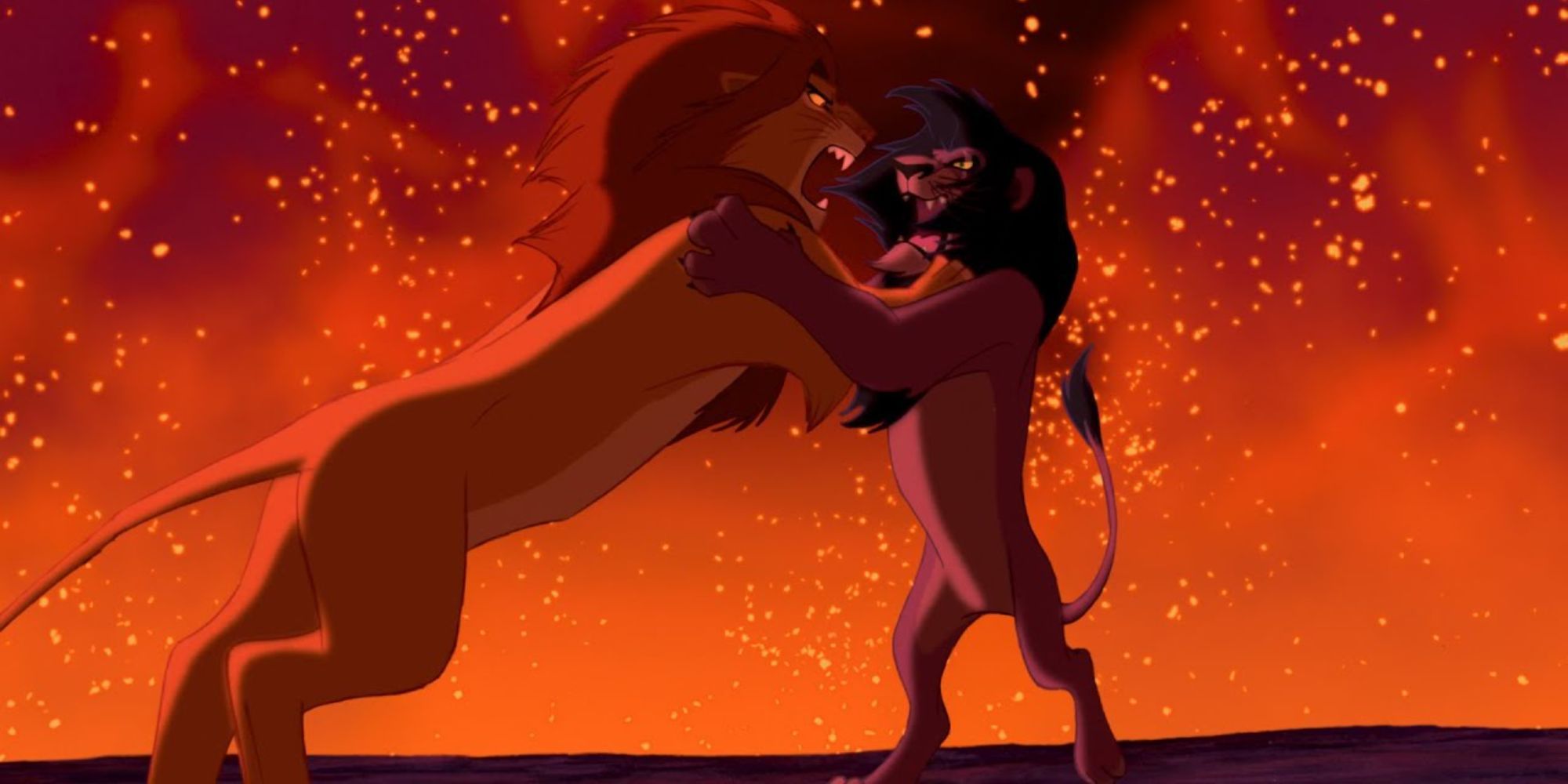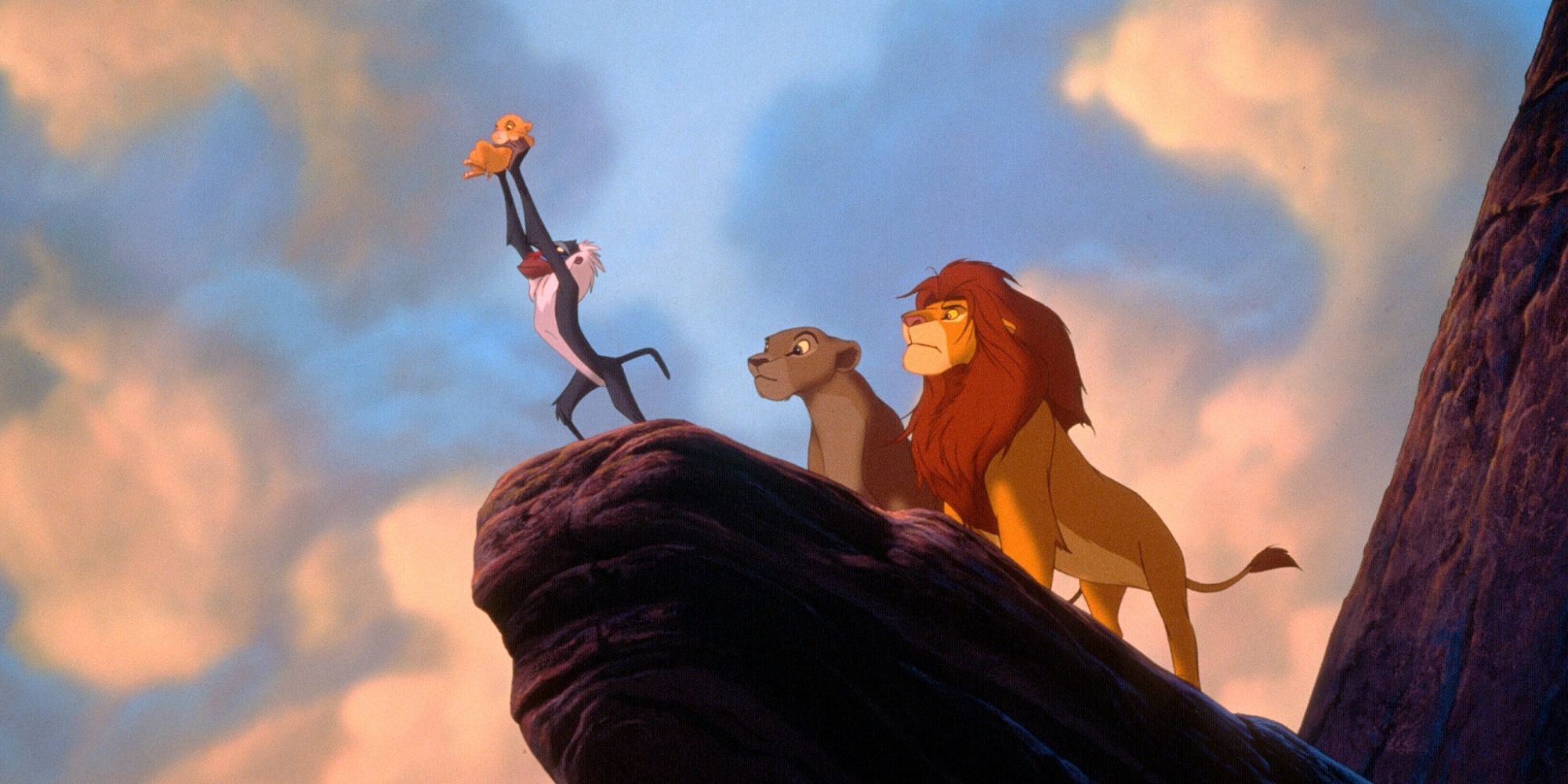The Big Picture
- Disney movies can have dark and brutal moments, often influenced by the darker original stories they are based on.
- The Lion King had several alternate scenes that were considered too dark, including an ending where Simba nearly falls off Pride Rock.
- The Lion King was originally inspired by Bambi and evolved into a more Shakespearean tale, adding drama and gravitas to the story.
Here's an ice-cold take: Disney movies can be really dark sometimes. Look anywhere on the internet, and you'll find some listicle about the scariest, or most depressing, moments to come out of the Happiest Place On Earth. Parents die a lot, and villains die almost all the time and in quite brutal ways – there are moments that can come out of nowhere that can become a core memory of fear, especially for young children. This can be attributed to an even colder take, which is that a large portion of the stories in which Disney films are based are even darker than what we see on screen, putting the "grim" in "Grimm's Fairytales." Even when the film is an original story, however, it can still get pretty twisted.
The Lion King, the 1994 classic and a top five Disney film in the eyes of many, is one such film. Tenuously based on William Shakespeare's Hamlet – though some have argued that it shares more in common with The History of Henry IV – The Lion King has some messed up moments sprinkled in among the funny sidekicks and incredible soundtrack. Of course, there's Mufasa's death, in which he is thrown off a cliff and trampled by wildebeests. Then there’s also Scar’s death, in which he messes up so bad as king that nature gives up on him, and he ends up getting mauled to death by his hyena lackeys.
The final battle is also pretty intense. Scar’s murderous conspiracies are revealed as he stands atop the burning Pride Rock. Then, in one of the most dramatic final stands in Disney cinema, he and Simba, the one true king, fight to the death on top of it. It’s certainly one of the most horrific villain demises, if only in implication. Simba stands on Pride Rock after the battle, the heavens open up, and the land is restored when the one true king wears the crown. It’s not quite Hamlet, but still very Shakespearian.
The Alternate 'Lion King' Scenes That Were Too Dark For Disney
With the multiple Blu-rays and special editions of The Lion King that have been released, filled with special features — truly the best part of the film-viewing experience — we get a glimpse into what The Lion King could've been. A good place to start is the film’s alternate ending.
The ending starts about the same, with Simba and Scar battling on top of a burning Pride Rock, but instead of Simba's reign beginning in triumph, it was going to begin in defeat. In the film’s alternate ending, Simba ends up in the same position as his father, dangerously close to falling off the ledge of Pride Rock. After the utterance of "Goodnight, sweet prince," a direct reference to Shakespeare’s Hamlet, Scar flings him off the ledge. Consumed by fire, Scar laughs maniacally on top of Pride Rock, believing he has won. While it doesn't end like Hamlet – Simba ends up clinging to a branch and thankfully doesn't go out like his father – the ending was still considered too dark, and not quite as climactic, for the final product.
The ending wasn't the only deleted scene considered a little too messed up for kids. Scar would've been given a bit more screen time as the ecosystem-breaking false king. One scene in particular also provides a reason as to why Nala left Pride Rock in search of Simba. In a deleted scene, Scar decides that his reputation would improve if he had an heir, so he chooses Nala to be his queen. You know, Nala, Simba's childhood friend, who Scar would've theoretically known since she was a cub. (Yikes, as the kids say, that's one dastardly villain!) That scene was cut as well, but it further goes to show that The Lion King would've been a very different movie.
The Lion King’s darker alternate takes were gone, but they weren't forgotten. In fact, when The Lion King expanded past one movie and became a franchise, we saw some of the fossils of the film's lengthy production uncovered. In Julie Taymor's revolutionary stage adaptation of the film, which is running on The West End and Broadway to this day, we got "The Madness of King Scar," and with it, the scene where he makes the moves on Nala. The musical, and the 2019 remake, include final battles that are somewhat similar to the alternate ending as well — Scar is still killed by his henchmen, as in the final version of the film, but Simba's fakeout death from the alternate ending is added.
'The Lion King' Could've Been a Very Different Film
While many draw connections to Hamlet for this movie, the original template was actually Bambi, but with lions, and in Africa. As an interview with co-director Rob Minkoff and producer Don Hahn here on Collider.com revealed, it was a little more realistic in the way of Bambi as well. There were no magical ghosts or kooky baboon shaman. It was instead another story about an animal finding his place as leader of a particular habitat — it was just the savannah rather than the forest. It wasn’t long before the writers realized during their brainstorming that their ideas where getting a bit Shakespearean. Minkoff said:
“We were in the meeting, and Michael Eisner, the first thing he said was ... because it was called King of the Jungle. He said, "Maybe this could be King Lear." We're like, "King Lear? That's about a father with three daughters?" We're like, "That's not King Lear." Then Maureen Donly, who had produced Little Mermaid, in the back room, goes, "No, it's Hamlet." And everyone goes, "It's Hamlet!" And we're like, "Yes! It's Hamlet!"
From there, what would soon become The Lion King went from National Geographic to The War of the Roses really quickly. With that level of drama, the quest to put more and more of the Bard into the pride lands brought about some sick and twisted ideas. The Shakespearian elements, whether it be the road from layabout to sovereign ruler of Henry IV, the murderous king gone mad of Macbeth, or the father coming back as a ghost to spur his son into action of Hamlet, gave The Lion King's story the gravitas and drama that a film of this truly overwhelming and titanic scale deserved.


